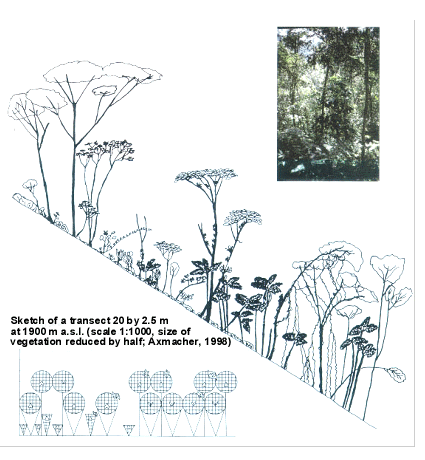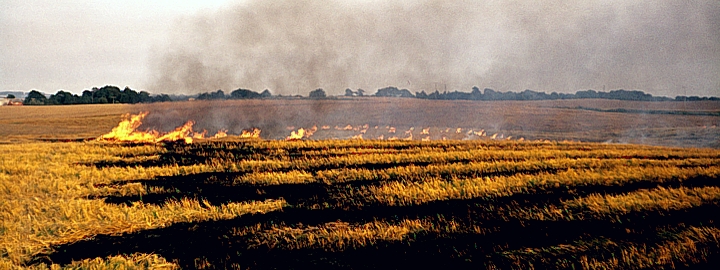 |
Terra Preta de Indio
Biochar Soil Management |
 |
Content: J. Lehmann
Host: Cornell University
Layout: V. Jauss
For optimal viewing:
This website is best viewed in a resolution of 1024 or higher, 32 bit color, and in Mozilla Firefox. Javascript, CSS and Tables.
|
 |
| © All original content belongs to Cornell University. This is a non-profit website for educational purposes that claims no ownership of copyright material. Other images and text belong to their respective owners. No copyright infringment intended. |
| |
| |
| |
|
| Root Structure and Functions in a Mountain Rainforest in Southern Ecuador
|
| Mountain rainforests belong to the most fragile ecosystems in the tropics, which are increasingly endangered by deforestation and subsequent erosion. In the Podocarpus National Park near Loja in Southern Ecuador, we investigate the structure and function of root systems along an altitude gradient (1). In three distinctely different forest ecosystems, the lower montane (1800m), montane(ca. 2200m) and upper montane zone (ca. 2600m) we study the mass and distribution of coarse and fine roots, their turnover, nutrient contents and activity distribution. This project is embedded in a larger program (2) which is comprised of projects studying nutrient and water fluxes, mycorrhiza, biomass production, gas exchange and fauna biology and ecology. |

The mountain rainforest in Southern Ecuador is characterized by steep slopes, which makes land slides a common phenomenon. The root systems stabilize the soil. After deforestation, this stabilization is lacking. |
(1) This project was funded by the German Science Foundation and administered by the University of Bayreuth and Kassel. The project partners were Christof Engels from the University of Bayreuth and Christoph Leuschner and Dietrich Hertel from the University of Kassel. The budget was an equivalent of about US$ 200,000 for three years.
(2) The program was funded by the German Science Foundation with participating researchers from more than ten universities in Germany. |
|



